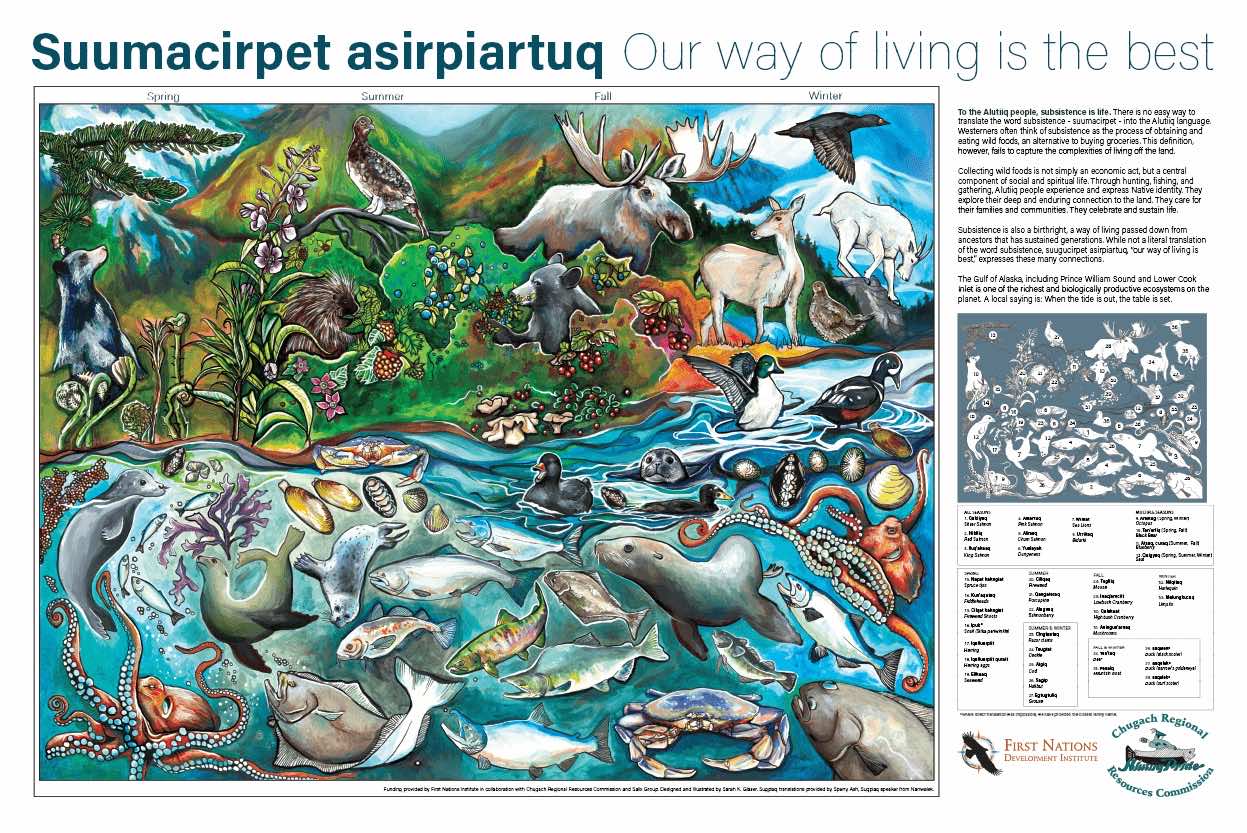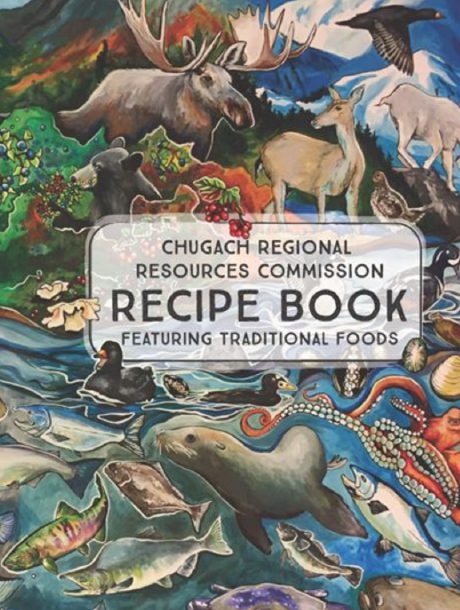TRADITIONAL FOODS
PROJECT
Subsistence Alliance
Traditional
Foods Project
Migratory Bird
Project
Nanwalek Salmon
Enhancement Project
Lower Cook Inlet
Moose Composition
Bat Sonar
Study
Ken’aq qaillun stuuluq
caskiumaqaq kentaqan cumi
– When the tide is out, the table is set.
Since Time
Immemorial…
For thousands of years, Alaska Native Peoples have been harvesting traditional foods based on seasons. In the Chugach region, this includes terrestrial, marine, and intertidal species. Access to these cherished traditional foods is directly tied to the health and well-being of Chugach Tribal Members, and Tribal stewardship over these resources is crucial for maintaining long-term sustainable subsistence practices.
Suumacirpet
Asirpiartug
Our way of living is the best.
Barriers to our traditional foods include residual oil from the Exxon Valdez oil spill that settled into our intertidal zones and prevented the harvest of bivalves and other beach species, changes in precipitation that can impact both vegetation growth and terrestrial mammal survival, and competition between hunters. In addition to these impacts, changes in seasonal climate can change traditional hunting seasons, have negative impacts on the pollination of traditional plants, and leave areas vulnerable to invasive species and infestations.
Through this program, CRRC promotes traditional food use, food consumption, and cultural preservation.
The role of meat and fish in the diet of the Chugach peoples is much larger than in the diet of the average American. There is little to no cultivable land in the Chugach region. While a few people have kitchen gardens and small greenhouses, the weather is not conducive to large-scale farming. Aside from berries and a few edible plants, the environment in which their ancestors lived did not provide much in the way of plant-based foods. This is not just a cultural preference; the Chugach people have adapted over thousands of years to a diet that consists primarily of meat, fish, invertebrates, and wildfowl. There are also no sources of domesticated animals in the region, and for the most part, no supermarkets. Indeed, despite a few attempts over recent decades, neither Chenega nor Tatitlek has a store in the village. Port Graham and Nanwalek each have village stores, and the towns of Cordova, Valdez, and Seward do have supermarkets, but the prices are much higher than consumers would see at stores in the Lower 48.
Replacing wild meat and fish in the diet with store-bought equivalents is in some cases impossible and is, at best, prohibitively expensive—especially in communities where jobs are scarce. The cost of transporting commercial foods is also an important factor. Sometimes food can be brought in by boat or by barge, but often a very expensive air charter is the only option available.
It is important to understand that traditional foods have a greater importance to traditional peoples than just their nutritional value, as important as that is. People in Prince William Sound talk about traditional foods as nourishing the spirit as well as the body. Wild resources are shared within and between Native communities in ways that store-bought resources tend not to be. In this sense, traditional foods bind the community and the region together. The loss of subsistence foods resulted in less sharing, as well as a lessening of the expression of these traditional ties.





